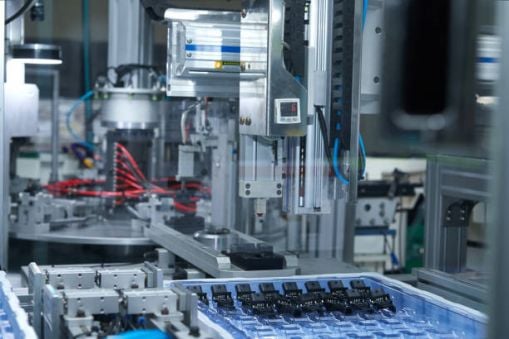Introduction: Understanding Injection Molding and 3D Printing
Injection molding and 3D printing are two widely used manufacturing processes with their own distinct advantages and applications. Injection molding is a tried and true method that has been used for decades, while 3D printing, also known as additive manufacturing, is a relatively newer technology that has gained popularity in recent years. Both processes have their strengths and weaknesses, and in this article, we will explore the cost-effectiveness of injection molding compared to 3D printing.
Cost Analysis: Initial Setup Investment
When it comes to the initial setup investment, injection molding typically requires a higher capital expenditure compared to 3D printing. Injection molding involves the creation of molds, which can be expensive, especially for complex designs. On the other hand, 3D printing requires a relatively inexpensive 3D printer and the corresponding CAD (Computer-Aided Design) software. This makes 3D printing a more cost-effective choice for small-scale production or prototyping.
Material Costs: Comparing Injection Molding and 3D Printing
Material costs play a significant role in determining the overall cost-effectiveness of a manufacturing process. Injection molding uses a wide range of materials, including plastics, metals, and even glass. The cost of these materials can vary depending on factors such as availability and quality. On the other hand, 3D printing materials, such as filaments or resins, are typically more expensive per unit volume. However, 3D printing allows for greater material efficiency, as it only uses the exact amount of material needed for each part, minimizing waste.
Production Volume: Scaling the Cost-Effectiveness
The production volume is a crucial factor to consider when determining the cost-effectiveness of injection molding versus 3D printing. Injection molding is highly efficient for large-scale production runs. Once the molds are created, the cost per unit decreases significantly, making it a cost-effective choice for high-volume production. On the other hand, 3D printing is better suited for low to medium volume production or when customization and flexibility are required. For small production runs, the cost per unit in 3D printing can be more competitive compared to injection molding.
Lead Time: Speeding Up the Production Process
Lead time, or the time it takes to produce a part, is another aspect to consider in terms of cost-effectiveness. Injection molding typically has a longer lead time compared to 3D printing. The creation of molds and the setup process can take weeks or even months. On the other hand, 3D printing allows for rapid prototyping and quicker production turnaround times. This can be advantageous in scenarios where time is of the essence, making 3D printing a more cost-effective option for fast-paced industries.
Design Complexity: The Impact on Cost-Effectiveness
The complexity of the design plays a significant role in determining the cost-effectiveness of injection molding versus 3D printing. Injection molding is better suited for complex designs that require high precision and intricate details. The ability to create molds allows for consistent and accurate replication of complex parts. On the other hand, 3D printing excels in creating prototypes or parts with intricate geometries that would be challenging or costly to produce using traditional manufacturing methods. For simple designs, injection molding may be more cost-effective, while 3D printing offers a cost advantage for complex and customized designs.
Post-Processing and Finishing: Considering Additional Costs
Post-processing and finishing are essential steps in the manufacturing process that can add to the overall cost. Injection molding often requires additional steps such as trimming, painting, or assembly. These processes can increase the cost per unit, especially for complex designs. In contrast, 3D printing can produce finished parts directly from the printer, eliminating the need for additional post-processing steps. This can result in cost savings, particularly for smaller production runs or when intricate finishing is not required.
Quality and Durability: Balancing Cost and Performance
When comparing injection molding and 3D printing, it is essential to consider the quality and durability of the final products. Injection molding typically produces parts with superior strength and durability, making it ideal for applications where performance is critical. On the other hand, 3D printing can vary in terms of quality and durability, depending on the material and printing parameters used. While 3D printing has made significant advancements in recent years, injection molding still offers a higher level of reliability and consistency, albeit at a potentially higher cost.
Long-Term Cost Considerations: Maintenance and Upkeep
Long-term cost considerations are crucial when evaluating the cost-effectiveness of injection molding and 3D printing. Injection molding machines require regular maintenance, mold replacement, and might incur additional costs in case of design changes. Conversely, 3D printers require periodic calibration, filament or resin replacement, and software updates. While both processes have associated maintenance costs, injection molding machinery tends to have higher maintenance requirements and expenses compared to 3D printers.
Environmental Impact: Evaluating Sustainability
The environmental impact is a growing concern in the manufacturing industry. Injection molding often generates waste material during setup and design changes, which can be challenging to recycle. On the other hand, 3D printing generates less waste as it only uses the necessary amount of material for each part. Additionally, 3D printing allows for designs that are optimized for material usage, reducing overall waste. This makes 3D printing a potentially more cost-effective and sustainable option in terms of environmental impact.
Conclusion: Choosing the Right Manufacturing Method
Injection molding and 3D printing are both valuable manufacturing methods with their own unique advantages and cost considerations. When deciding which method is more cost-effective, it is crucial to consider factors such as initial setup investment, material costs, production volume, lead time, design complexity, post-processing requirements, quality and durability, long-term maintenance, and environmental impact. By carefully evaluating these factors based on specific project requirements, manufacturers can make an informed decision and choose the method that best aligns with their cost-effectiveness goals.

